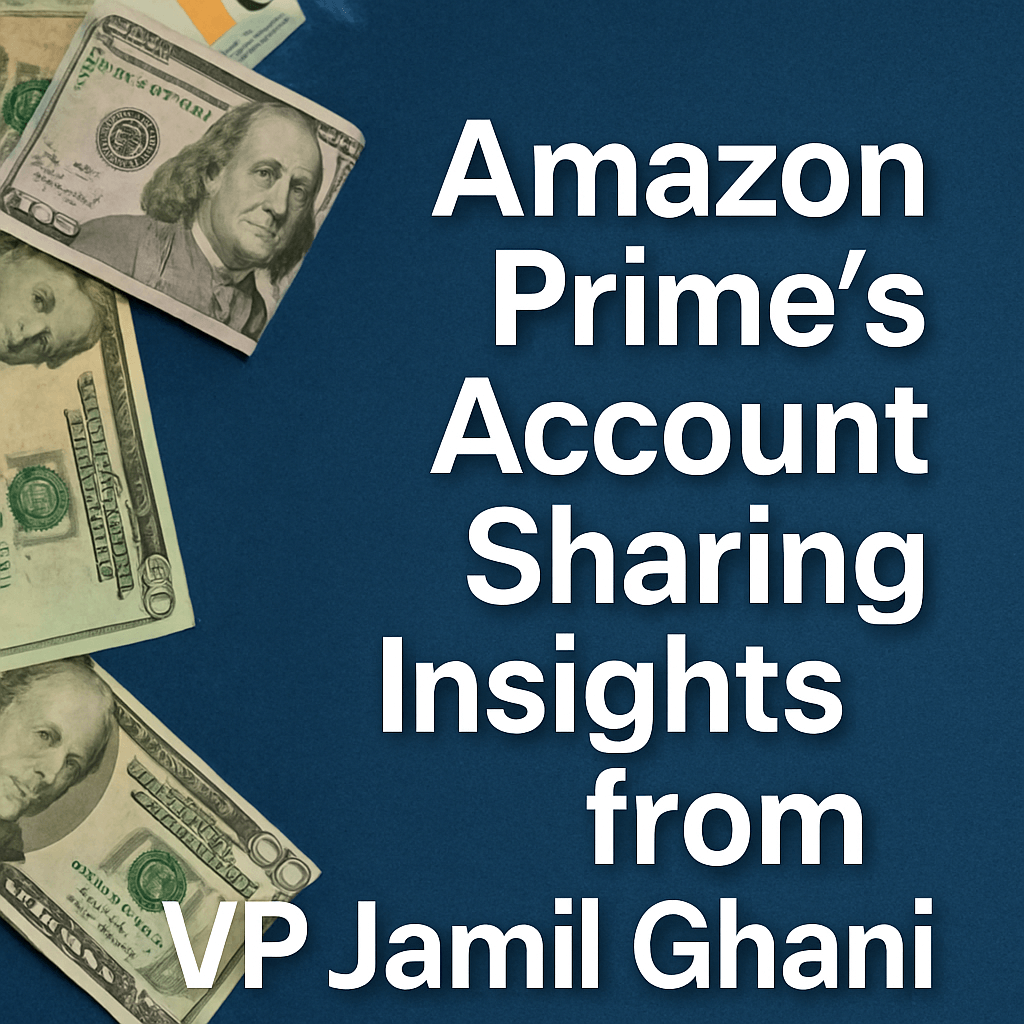Amazon Prime’s Account Sharing Insights from VP Jamil Ghani

Amazon is aware that some customers are sharing Prime accounts beyond their households; however, Amazon Prime’s Vice President Jamil Ghani has indicated that the company is currently holding off on implementing a Netflix-style crackdown on account sharing. This decision comes in the context of a competitive subscription services landscape where stringent measures have been adopted by competitors, including Netflix and Disney.
Understanding the Account Sharing Dilemma
Recent industry analysis suggests that account sharing has become a widespread issue, not only within Amazon but across various subscription services. While platforms like Netflix and Disney have chosen to enforce stricter rules—requiring users to establish separate accounts for those outside their household—Amazon is taking a different approach by encouraging individuals to create their own memberships.
According to Ghani, Amazon is still keenly aware that many users are leveraging shared accounts in ways that the service was not originally intended for. The tech giant has noted that some orders are being placed by individuals who are not only account holders but may also live in different homes. This reflects a trend that has significant implications for subscription revenue models.
The Competitive Landscape
Amazon’s strategy diverges fundamentally from that of Netflix and Disney, particularly in light of Netflix’s substantial user growth following its password-sharing policy update. In May 2023, Netflix officially announced steps to restrict password sharing, informing customers that they would need to create new accounts for users outside their families or households. This resulted in a remarkable surge in subscribers, with Netflix reporting a gain of 19 million users in the last quarter of 2024. Revenue figures reflected this growth, reaching $10.5 billion in Q1 2025, a 12.5% increase year-on-year.
In contrast, Disney adopted similar restrictions for its streaming platform in September 2024, stating that subscriptions “cannot be shared outside of your household.” Warner Bros. Discovery also initiated messaging about account sharing for its Max service in December 2024.
Ghani’s Perspective on Account Sharing
“Prime is meant for the household. Our membership is different from many others in that it is purposely intended for those living together, whether that be family or adults sharing a space.” – Jamil Ghani, VP of Amazon Prime
In an interview with Fortune, Ghani acknowledged the prevalence of account sharing yet emphasized Amazon’s distinct positioning. He suggested that the nature of the Prime service—offering extensive benefits ranging from expedited shipping to exclusive discounts—reinforces its intended use among those living together. While he did not make any formal declarations regarding policy changes, his acknowledgment of the sharing behavior underlines the potential challenges awaiting Amazon’s strategic planning.
A Broader Context of Amazon’s Business Model
It’s important to place Amazon Prime within the larger framework of Amazon’s business operations. The Prime membership model is multifaceted, incorporating benefits such as one-day and, in some instances, same-day delivery. Recent enhancements to Amazon’s logistics have improved delivery speeds even further, with some items reaching customers within hours.
Amazon’s vast ecosystem includes significant ventures into cloud computing (with Amazon Web Services), online retail, healthcare services, and, more recently, artificial intelligence. As a $2.2 trillion market cap corporation, Amazon has the luxury of experimenting with its account-sharing strategies without facing immediate risk to its revenue streams.
Encouraging Individual Memberships
For now, Amazon’s strategy appears to prioritize fostering individual memberships over cracking down on shared accounts. Ghani elaborated that they are revamping their Prime Young Adult program to cater to users aged 18-24. This initiative is designed to aid those transitioning from parental accounts to their own while maintaining full access to Prime benefits. Furthermore, the company also offers Prime Access—a discount program for individuals on government assistance—demonstrating a commitment to inclusivity.
In the face of an uncertain economic environment, maintaining customer value and loyalty remains paramount. Ghani stated, “We want all of our customers to experience Prime because we do think it’s the best way to be an Amazon customer, and we’re making it easier and easier for members to have a direct relationship of their own.” This customer-centric approach will be crucial in determining how successful, or not, Amazon is in maintaining its subscriber base amid competitive pressures.
Conclusion
As the streaming subscription landscape evolves, Amazon’s current stance on account sharing sets it apart from its competitors. Taking a more lenient approach might serve to strengthen customer loyalty, especially among younger audiences. However, the potential financial benefits of enforcing stricter account-sharing policies cannot be overlooked. The coming months will likely reveal whether this strategy will pay dividends or require reevaluation. As Amazon navigates this delicate balance, consumer behavior will be a key barometer of its success.
Source: fortune